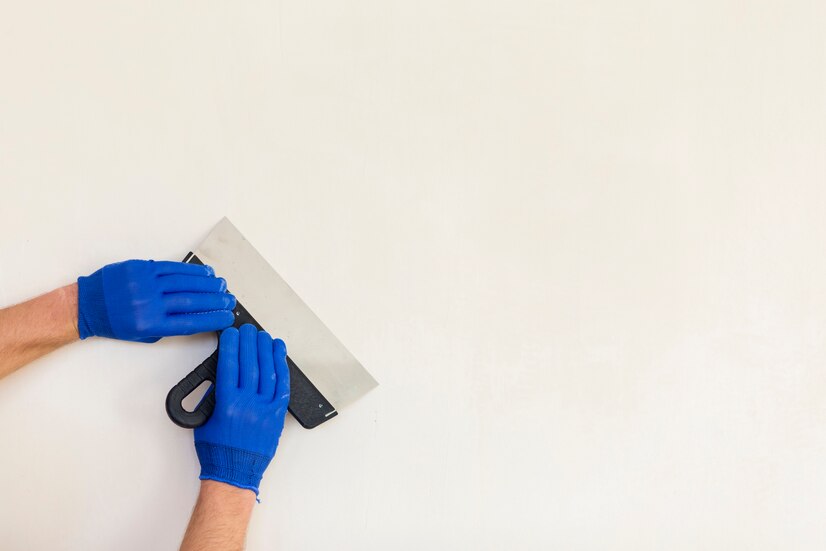
7 Must-Know Tips for a Successful C
Caulking plays a vital role in ensuring your windows are sealed tightly, preventing drafts, water leaks, and energy inefficiencies. A well-executed window caulking project can drastically improve the comfort and energy efficiency of your home or business. However, to achieve the best results, it’s crucial to know a few key tips to guide the process.
In this article, we’ll cover seven must-know tips for a successful window caulking project in Melbourne. Whether you’re doing it yourself or hiring professionals, these tips will help you get the job done right.
1. Choose the Right Caulk for Your Windows
When it comes to caulking your windows, selecting the right type of caulk is essential for long-term performance. Not all caulking materials are created equal, and choosing the wrong one can lead to premature deterioration or ineffective sealing. There are different types of caulking materials available, including:
-
Acrylic Latex Caulk: This is an affordable and easy-to-use option for interior windows. It’s water-based, making it easy to clean up, and it’s also paintable, which is ideal if you want to match the caulk with your wall color.
-
Silicone Caulk: Known for its durability, silicone caulk is waterproof and offers excellent flexibility. It’s perfect for outdoor windows or areas that are exposed to high moisture levels. Silicone caulk doesn’t yellow over time and provides a longer-lasting seal.
-
Polyurethane Caulk: This is a highly durable option that can withstand extreme weather conditions. It’s perfect for windows exposed to harsh Melbourne climates, as it provides a long-lasting seal and excellent adhesion.
Make sure to choose a caulk that suits the environment and needs of your windows. If you’re unsure, it’s always a good idea to consult with professionals who specialize in window caulking services in Melbourne.
2. Prepare the Window Surface Properly
Before applying any caulk, the preparation of the window surface is critical to ensure the best possible adhesion. Follow these steps for proper surface preparation:
-
Clean the Surface: Remove any dirt, dust, or old caulk from the window frame and surrounding areas. A clean surface ensures that the caulk adheres properly. Use a utility knife to carefully remove any old, cracked caulking. Clean the surface with a mild cleaner and let it dry completely.
-
Repair Any Damage: Check for any cracks, holes, or gaps in the window frame. Use a filler or wood putty to repair any damage before caulking. This will ensure a smooth surface for the caulk to adhere to.
-
Ensure Dry Conditions: Caulking should only be applied when the window frame and surrounding area are dry. Moisture can prevent the caulk from adhering properly, so wait for a dry, sunny day before beginning your caulking project.
By properly preparing the surface, you’ll ensure that the caulk seals effectively and lasts for years to come.
3. Use the Right Tools for the Job
Using the right tools can make a significant difference in the outcome of your caulking project. Here are the essential tools you’ll need for a successful window caulking project:
-
Caulk Gun: A caulk gun is necessary for applying the caulk evenly and precisely. It allows for consistent pressure while applying the caulk, making the process smoother and more efficient.
-
Utility Knife: Use a utility knife to remove any old caulk or clean up excess caulk after application. A sharp knife will give you clean, crisp edges.
-
Caulk Smoother: A caulk smoother or spatula is a handy tool for smoothing out the caulk after application. This ensures that the caulk is evenly spread and prevents unsightly gaps or excess caulk.
-
Painter’s Tape: Painter’s tape is useful for creating clean, straight lines along the window frame. Apply the tape along the edges before caulking, then remove it after smoothing the caulk to get neat, professional-looking results.
Investing in the right tools for the job will make your window caulking project easier and more efficient, ensuring that the results look neat and professional.
4. Apply the Caulk in Small, Steady Beads
When applying caulk to your window frame, it’s important to work in small, steady beads. Avoid applying too much caulk at once, as this can result in messy, uneven lines. Here’s how to apply the caulk effectively:
-
Start from One Corner: Begin applying caulk at one corner of the window frame and work your way around, applying small beads of caulk along the edges. Maintain steady pressure on the caulk gun to create an even bead of caulk.
-
Smooth the Caulk Immediately: After applying each bead of caulk, immediately smooth it with a caulk smoother or your finger. This helps ensure that the caulk is evenly spread and fills all gaps.
-
Don’t Overfill: Only apply as much caulk as necessary to seal the gap. Overfilling can result in excess caulk spilling out, creating a messy appearance.
Applying the caulk in steady, small beads will ensure that the seal is effective and the final result looks professional.
5. Pay Attention to Temperature and Weather Conditions
Temperature and weather conditions can significantly affect the performance of your caulking project. For optimal results, avoid caulking your windows in extreme heat or cold. Here’s why:
-
Temperature: Most caulks perform best when applied in temperatures between 5°C and 30°C. If it’s too hot, the caulk may dry too quickly, leading to poor adhesion. If it’s too cold, the caulk may not cure properly.
-
Humidity: Humid conditions can affect how well caulk adheres to surfaces. Avoid applying caulk when it’s raining or extremely humid, as this can lead to a less effective seal.
Plan your caulking project on a dry, mild day to ensure the best conditions for applying the caulk.
6. Allow Proper Drying Time
After applying the caulk, it’s important to allow it to dry properly before exposing it to any moisture or movement. Each type of caulk has a different drying time, so be sure to read the manufacturer’s instructions.
-
Silicone Caulk: Typically, silicone caulk needs 24 hours to fully cure, though it may be touch-dry within a few hours.
-
Acrylic Latex Caulk: This type of caulk may require up to 24 hours to cure, but it is often dry to the touch in 1-2 hours.
Be patient and allow the caulk to dry completely before touching or exposing it to moisture. This will ensure the seal remains intact and performs effectively.
7. Maintain Your Caulking Regularly
Once your window caulking project is complete, it’s important to maintain the seal to ensure its longevity. Here are a few tips for maintaining your window caulking:
-
Inspect the Caulk Annually: Check the caulk around your windows once a year to ensure it hasn’t cracked, shrunk, or pulled away from the surface. If you notice any issues, remove the old caulk and reapply a fresh layer.
-
Clean the Caulked Areas: Regularly clean the areas around your windows to prevent dirt and grime buildup, which can degrade the caulk over time. Use a mild cleaning solution and a soft cloth to gently clean the window frames.
-
Reapply Caulk as Needed: If you notice any gaps, cracks, or peeling caulk, reapply a fresh layer as soon as possible to prevent drafts, moisture, or energy loss.
By regularly maintaining your caulked windows, you can ensure that they continue to provide the necessary insulation and protection for your home or business.
Conclusion
A successful window caulking project in Melbourne requires careful preparation, attention to detail, and the right materials. By following these seven must-know tips, you can achieve a professional-looking result that will improve the energy efficiency, comfort, and durability of your windows.
Whether you’re doing it yourself or hiring a professional, understanding the importance of choosing the right caulk, properly preparing the surface, and maintaining the seal will help ensure that your window caulking project is a success. With the right approach, your windows will be sealed tightly for years to come, saving you money on energy costs and preventing damage from moisture and drafts.









